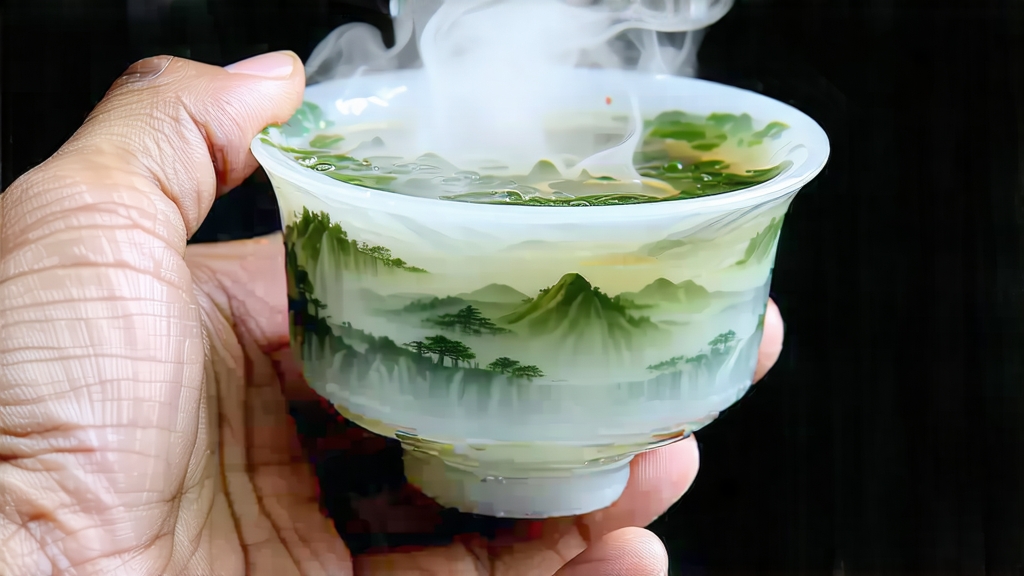
Tieguanyin, literally “Iron Goddess of Mercy,” is the most celebrated sub-style of Chinese oolong, a tea that sits poetically between green freshness and black depth. Born in the granite ridges of Anxi County, southern Fujian, it has travelled from hidden temple courtyards to Michelin-starred teacups, yet its soul remains anchored in morning mountain mist and the echo of stone paths trodden by barefoot monks. To understand Tieguanyin is to listen to a 300-year dialogue between soil, climate, craft, and devotion.
Historical roots
Local legend credits the discovery to a devout farmer named Wei Yin who, in the early 1700s, dreamt of Guanyin, the Bodhisattva of Compassion. She guided him to a rugged iron-red cliff where a single tea shrub thrived in mineral-rich crevices. Wei transplanted the bush to his field, nurtured it, and shared the leaves with villagers who felt a calming, almost meditative energy. The name “iron” references the leaf’s metallic sheen when roasted; “Guanyin” honours the divine hint. Qing-dynasty tax records list “Ti-koan-im” among tribute teas shipped to Beijing, proving imperial favour by 1725. Overseas, Fujianese migrants carried Tieguanyin to Taiwan, Vietnam, and later New York’s Chinatown, turning it into an emblem of diaspora identity.
Terroir and cultivar
Authentic Tieguanyin demands two inseparable factors: the Hongxin (“red-heart”) cultivar and Anxi’s unique microclimate. The county’s granite mountains rise 600–1,200 m, trapping fog that slows photosynthesis, thickening leaf cuticles and concentrating aromatic precursors. Day-night temperature swings of 10 °C encourage the formation of floral lactones and geraniol, the molecules behind Tieguanyin’s signature orchid note. Lateritic soils, rich in iron and potassium, lend a subtle mineral bite that lingers on the lower palate. Attempts to transplant Hongxin to flatland plantations have produced leafy bushes but lose the elusive “yun”—a layered aftertaste Chinese connoisseurs liken to the echo of a temple bell.
Craft: the eight labours of fragrance
Modern Anxi masters still follow an eight-step cycle that can stretch across thirty-six hours:
- Picking: only the standard “half-open” triad of two leaves and a bud, ideally before 10 a.m. when dew weight balances cell turgor.
- Sun-withering: leaves are spread on bamboo screens under 70 % sunlight for 20–40 minutes, depending on cloud cover, to reduce moisture to 65 %.
- Indoor withering & tossing: the “living leaf” rests on racks while artisans rhythmically tumble it in wicker drums every hour. Friction bruises edges, triggering enzymatic oxidation; the core stays green, creating oolong’s bi-coloured “green leaf with red fringe.”
- Fixing: a 260 °C tumble in an electric drum for three minutes halts oxidation at 30–40 %, preserving floral volatiles.
- Rolling: the hot leaves are wrapped in square cloth bundles and kneaded under mechanical pressure, rupturing cells so juices coat the surface, readying them for aroma release.
- First baking: 90 °C for two hours lowers moisture to 15 %, stabilising shape.
- Ball-rolling: the semi-dry leaf is re-wrapped and tumbled for another hour, tightening into the iconic dragonfly-head pellet.
- Second baking & roasting: the critical “fire” phase. Traditional charcoal pits made of longan wood smoulder at 60–80 °C; masters hand-turn leaves every twenty minutes for six to twelve hours. The degree of roast divides Tieguanyin into three market styles: Qingxiang (light, floral), Xiaoqing (medium, creamy), and Nongxiang (heavy, roasted nut).
Styles & flavour spectrum
Qingxiang Tieguanyin, popular since the 1990s, steeps a brilliant jade liquor with notes of fresh orchid, lily, and honeydew. Its light body and lingering sweetness appeal to newcomers, but purists argue it lacks the depth that once defined the tea. Xiaoqing offers a middle road: a pale gold cup with magnolia aroma and a buttery mouthfeel reminiscent of milk chocolate. Nongxiang, the original export style, presents amber broth, toasted sesame